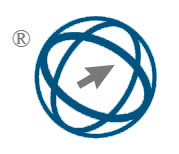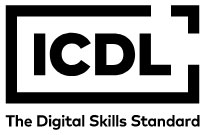A Unified Trace Meta-Model for Alignment and Synchronization of BPMN and UML Models
Abstract
Organizations often face information system (IS) failures due to misalignment with business goals. Business process models (BPMs) play a crucial role in addressing this issue but are often developed independently of IS models (ISMs), resulting in non-interoperable systems. This paper proposes a traceability method to link BPMs and ISMs, bridging the gap between business and software domains. We introduce a unified trace meta-model integrating BPMN elements with UML constructs (use cases and class diagrams) via traceability links. This meta-model is instantiated as the BPMNTraceISM diagram, ensuring seamless integration through bidirectional transformation models. To validate our approach, we developed a graphical editor for BPMNTraceISM diagrams and implemented transformations using the ATLAS Transformation Language (ATL). A case study on a loan approval process demonstrates the method’s effectiveness in aligning BPMN and UML elements, improving interoperability and model alignment across domains.
Full Text:
PDFReferences
Bouzidi, A., Haddar, N.,Haddar, K. (2019). Traceability and Synchronization Between BPMN and UML Use Case Models. Ingénierie des Systèmes d Inf., Vol. 24, No.2, pp215-228, DOI: https:// DOI.org/10.18280/isi.240214
OMG UML Specification, O. A. (2017) ‘Omg unified modeling language (omg uml), superstructure, v2’, Object Management Group, vol.70.
OMG BPMN Specification. Business Process Model and Notation. http://www.bpmn.org/. Accessed: 2023-01-31.
Driss, M., Aljehani, A., Boulila, W., Ghandorh, H., Al-Sarem, M. (2020). Servicing your requirements: An fca and rca-driven approach for semantic web services composition. IEEE Access. Vol 8, PP.59326-59339, DOI : 10.1109/ACCESS.2020.2982592
Ghiffari, K. A., Fariqi, H., Rahmatullah, M. D., Zulfikarsyah, M. R., Evendi, M. R. S., Fathoni, T. A. Raharjana, I. K. (2023, January) ‘BPMN2 user story: Web application for generate user story from BPMN. In AIP Conference Proceedings. AIP Publishing LLC. Vol 2554, No 1, PP. 040003, DOI: https:// DOI.org/10.1063/5.0103685
Raharjana, I. K., Aprillya, V., Zaman, B., Justitia, A., Fauzi, S. S. M. (2021). Enhancing software feature extraction results using sentiment analysis to aid requirements reuse. In Computers. Vol 10, NO 3, PP.36, DOI: ; https:// DOI.org/10.3390/computers10030036
Khlif, W., Elleuch, N., Alotabi, E., Ben-Abdallah, H. (2018) ‘Designing BP-IS Aligned Models: An MDA-based Transformation Methodology’, DOI:10.5220/0006704302580266
Kharmoum, N., Retal, S., Rhazali, Y., Ziti, S., Omary, F. (2021) ‘A Disciplined Method to Generate UML2 Communication Diagrams Automatically From the Business Value Model’, In Advancements in Model-Driven Architecture in Software Engineering,IGI Global, PP. 218-237, DOI:10.4018/978-1-7998-3661-2.ch012
Rahmoune, Y., Chaoui, A. (2022). ‘AUTOMATIC BRIDGE BETWEEN BPMN MODELS AND UML ACTIVITY DIAGRAMS BASED ON GRAPH TRANSFORMATION’. In Computer Science, Vol 23, No 3, DOI:10.7494/csci.2022.23.3.4356
Ivanchikj, A., Serbout, S., Pautasso, C. (2020, October). ‘From text to visual BPMN process models: Design and evaluation’. In Proceedings of the 23rd ACM/IEEE international conference on model driven engineering languages and systems, PP. 229-239, DOI: https:// DOI.org/10.1145/3365438.3410990
Mills, C., Escobar-Avila, J., Haiduc, S. (2018, September). ‘Automatic traceability maintenance via machine learning classification’. In 2018 IEEE International Conference on Software Maintenance and Evolution (ICSME), PP. 369-380, DOI : 10.1109/ICSME.2018.00045
Al-Hroob, A., Imam, A. T., Al-Heisa, R. (2018). ‘The use of artificial neural networks for extracting actions and actors from requirements document’. In Information and Software Technology. Vol 101, PP.1-15, DOI: https:// DOI.org/10.1016/j.infsof.2018.04.010
Min, H. S. (2016). Traceability guideline for software requirements and UML design. In International Journal of Software Engineering and Knowledge Engineering, Vol 26, No 01, PP.87-113, DOI: https:// DOI.org/10.1142/S0218194016500054.
Eyl, M., Reichmann, C., Müller-Glaser, K. (2017). ‘Traceability in a fine grained software configuration management system. In Software Quality’. Complexity and Challenges of Software Engineering in Emerging Technologies: 9th International Conference, SWQD 2017, Vienna, Austria, January 17-20, 2017, Proceedings 9, Springer International Publishing. PP.15-29, DOI:10.1007/978-3-319-49421-0_2
Khelladi, D. E., Kretschmer, R., Egyed, A. (2018, October). ‘Change propagation-based and composition-based co-evolution of transformations with evolving meta-models’. In Proceedings of the 21th ACM/IEEE International Conference on Model Driven Engineering Languages and Systems, PP. 404-414, DOI: https:// DOI.org/10.1145/3239372.3239380
de Carvalho, E. A., Gomes, J. O., Jatobá, A., da Silva, M. F., de Carvalho, P. V. R. (2021). ‘Employing resilience engineering in eliciting software requirements for complex systems: experiments with the functional resonance analysis method (FRAM)’. In Cognition, Technology Work. Vo 23, PP.65-83, DOI: https:// DOI.org/10.1007/s10111-019-00620-0
Lopez-Arredondo, L. P., Perez, C. B., Villavicencio-Navarro, J., Mercado, K. E., Encinas, M., Inzunza-Mejia, P. (2020). ‘Reengineering of the software development process in a technology services company’. In Business Process Management Journal. Vol 26, No 2, PP. 655-674, DOI: https:// DOI.org/10.1108/BPMJ-06-2018-0155
Moreira, J. R. P., Maciel, R. S. P. (2017) ‘Towards a Models Traceability and Synchronization Approach of an Enterprise Architecture’, In SEKE, PP.24-29, DOI: 10.1109/CBI.2019.00028.
Guo, J., Cheng, J., Cleland-Huang, J. (2017, May). ‘Semantically enhanced software traceability using deep learning techniques’. In 2017 IEEE/ACM 39th International Conference on Software Engineering (ICSE). PP. 3-14, DOI : 10.1109/ICSE.2017.9
Swathine, K., Sumathi, N., Nadu, T. (2017). ‘Study on Requirement Engineering and Traceability Techniques in Software Artefacts’. In international Journal of Innovative Research in Computer and Communication Engineering. Vol 5, No 1, DOI:10.1109/ICSRS.2017.8272863
Pavalkis, S., Nemuraite, L., Milevičienė, E. (2011, October). Towards traceability meta-model for business process modeling notation. In Conference on e-Business, e-Services and e-Society,Springer, Berlin, Heidelberg, PP. 177-188, DOI : 10.1007/978-3-642-27260-8_14
Bouzidi, A., Haddar, N., Abdallah, M. B., Haddar, K. (2018, October). Alignment of business processes and requirements through model integration. In 2018 IEEE/ACS 15th International Conference on Computer Systems and Applications (AICCSA), pp. 1-8. IEEE, DOI : 10.1109/AICCSA.2018.8612870
Bouzidi, A., Haddar, N. Z., Ben-Abdallah, M., Haddar, K. (2020). Toward the Alignment and Traceability between Business Process and Software Models. In ICEIS, Vol 2,pp. 701-708, DOI:10.5220/0009004607010708
DOI: https://doi.org/10.31449/inf.v49i16.4974

This work is licensed under a Creative Commons Attribution 3.0 License.









